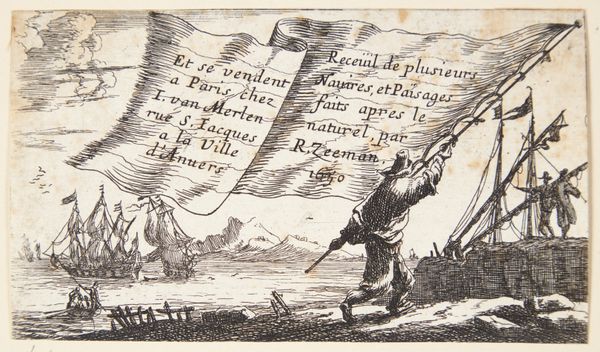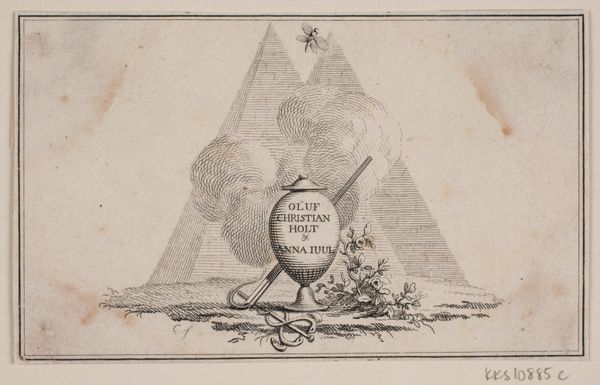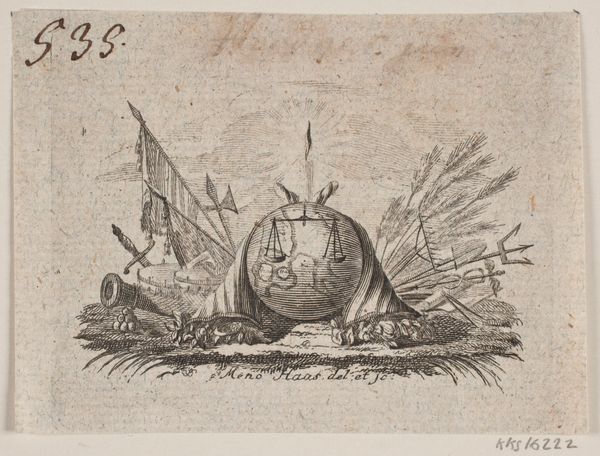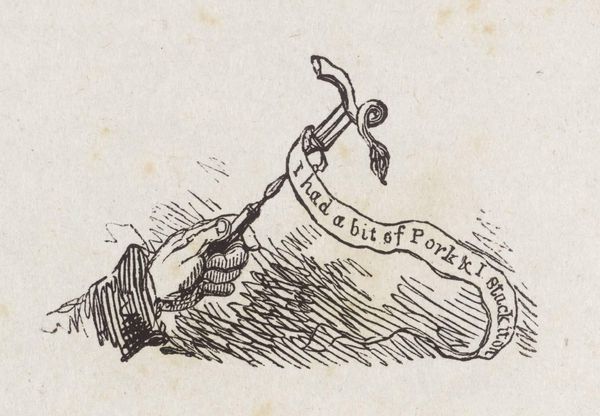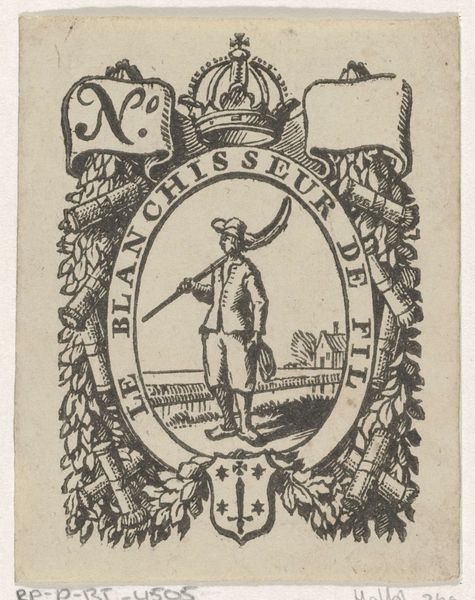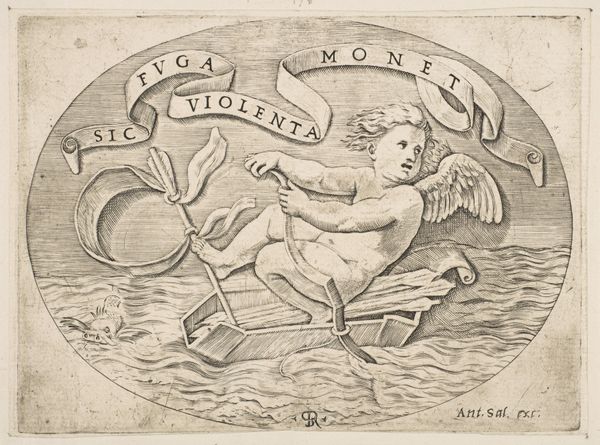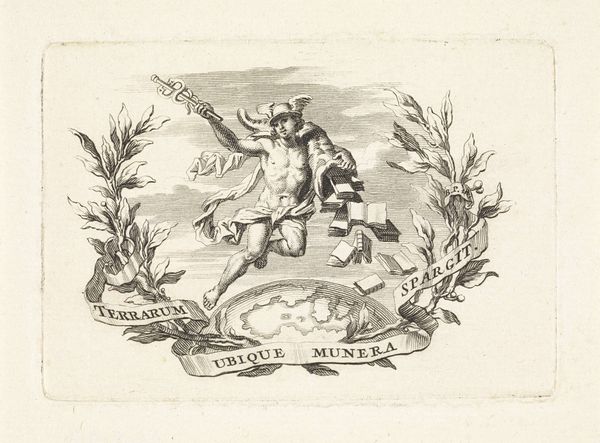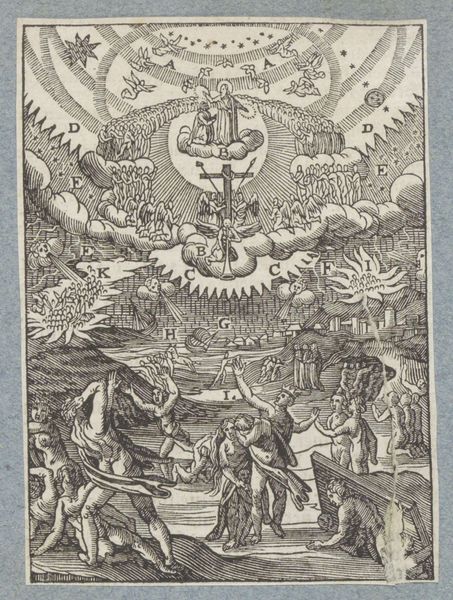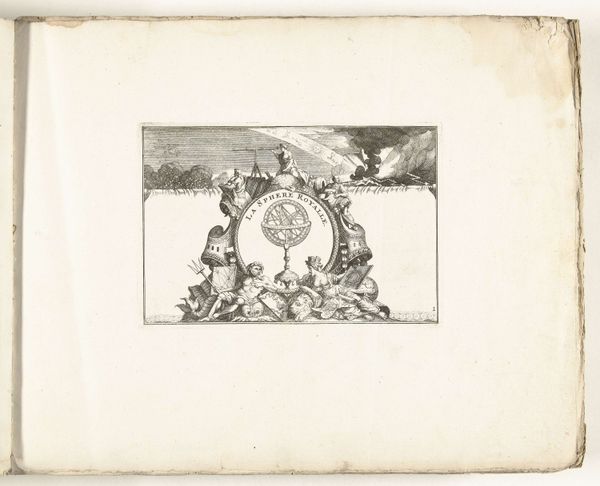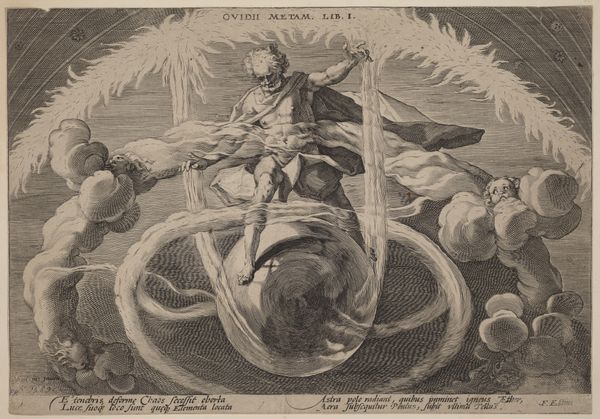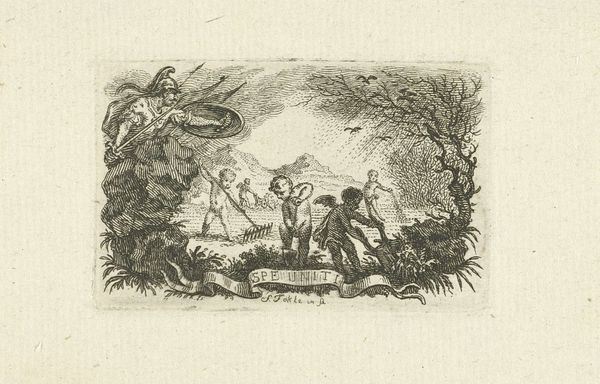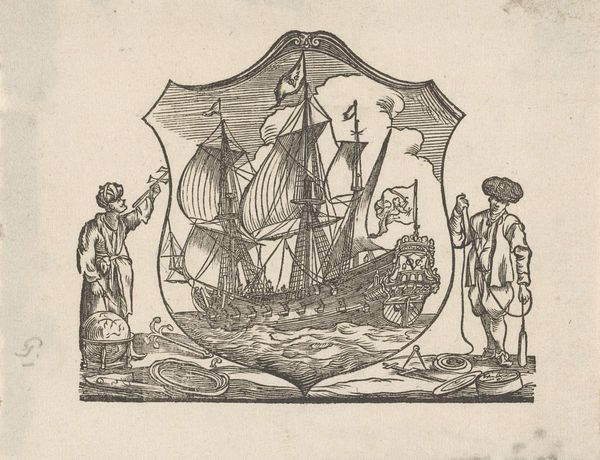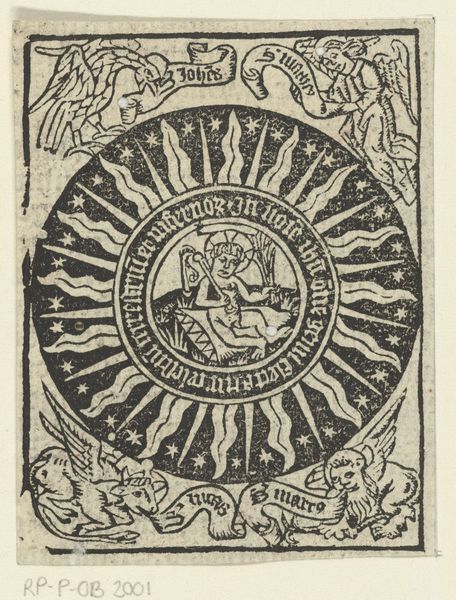
drawing, ink, pen
#
drawing
#
baroque
#
pen drawing
#
pen sketch
#
landscape
#
ink
#
pen
Dimensions: height 36 mm, width 58 mm
Copyright: Rijks Museum: Open Domain
Curator: Here we have Bernard Picart’s pen and ink drawing, “Vignet met ster boven landschap,” created in 1711. It’s currently held in the Rijksmuseum collection. What are your initial thoughts on this intricate vignette? Editor: The density is remarkable, a tight composition that feels almost overloaded. It’s as if Picart has crammed all available knowledge into this small space. A single star glows prominently. Curator: Yes, and let's consider the production of that "knowledge" you describe. Notice the sheer volume of books and writing instruments stacked to the left—alongside the surveying tools, possibly alluding to colonial land surveying, arranged to the right, above the mountainous landscape. These elements highlight not just the accumulation of knowledge but also its active deployment for specific, and possibly exploitative, ends. Editor: That’s interesting. I was focusing on the star and banner. It looks celebratory but perhaps with irony in light of how these Enlightenment instruments could be leveraged for control and oppression of landscapes and resources. The Latin inscription above the star reads INTER OMNES, what might that signify? Curator: Indeed. Given Picart's position at the forefront of the Enlightenment and his later involvement in publishing religious engravings—though seemingly against dogmatic interpretations of the Bible—"among all" might signal a kind of universal reason, but whose "reason" and for what purposes? Editor: The materiality also draws me in—the quality of the paper, the fineness of the ink lines. Was this a preparatory sketch for a larger work or intended as a final piece itself? The precision feels decidedly Baroque, but with a proto-Enlightenment focus on scientific tools and observation. How were such drawings circulated? Curator: Its relatively small scale suggests perhaps a personal or commissioned piece. The texture created through the cross-hatching is compelling; this allows us to appreciate his labor as a draftsman, and it perhaps highlights that Picart was using ink as the ideal material to demonstrate refined Baroque aesthetics to a buying audience. It would likely have been reproduced via engravings which facilitated distribution and the proliferation of Enlightenment ideals and images. Editor: The landscape element seems almost secondary, a stage upon which these instruments of reason and empire are poised to act. So the drawing offers a commentary—explicit or not—on power relations and knowledge construction. Curator: Precisely. This isn’t merely a landscape drawing; it is, rather, a pointed meditation on how knowledge shapes, influences, and is used in shaping the world around us, underscoring the material means used to carry out those tasks. Editor: I find this deconstruction invaluable for contextualizing Picart's drawing beyond surface appearances. Thanks. Curator: Likewise. Seeing it with your lens reveals that "vignette" isn’t merely decorative, but pregnant with a potent synthesis of thought and method.
Comments
No comments
Be the first to comment and join the conversation on the ultimate creative platform.
